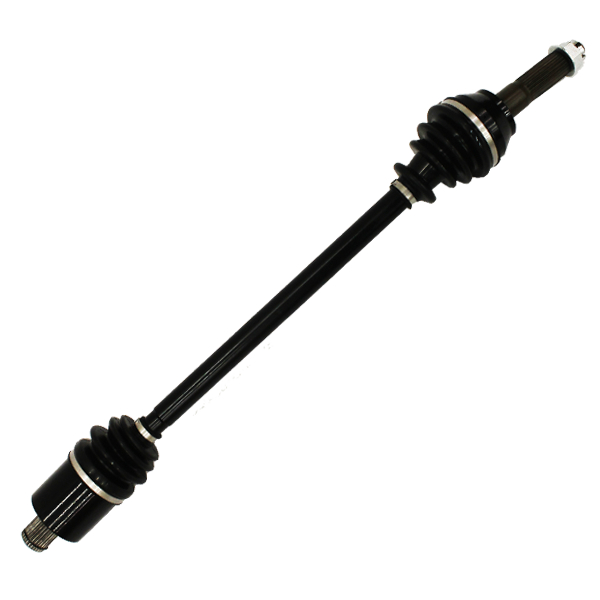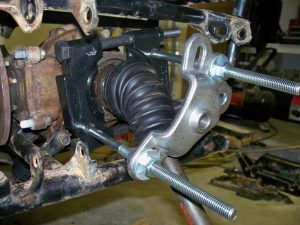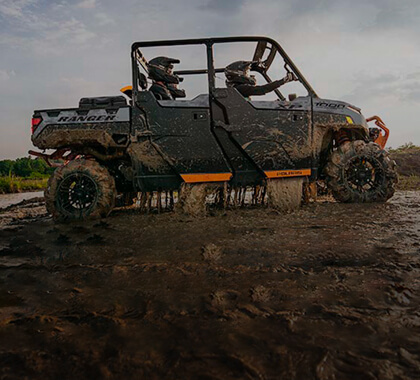The Polaris Ranger Axle Paradox: Why Cheap Axles Could Be Better For Your Machine
Nov 12th 2018
The best axles would obviously be the strongest and most expensive options… right? Well... not necessarily. In this post, we’re going to unpack the role that Polaris Ranger axles play within the complex system that is a Polaris Ranger UTV. We touch on physics and materials science, digging deep into the topic to shed further light on the debate that inferior Polaris Ranger axles could be better for your machine and off-road UTV lifestyle than things like Turner Axles, Rhino Axles, and High Lifter Axles.

Is a Stronger Axle Superior?
If you look at the top mud machines and high-horsepower racer Rangers, the majority run stronger and larger aftermarket Polaris Ranger axles -- most of which sourced from one of the two industry-leading firms: Turner and Gorilla. Both Turner Axles and Gorilla Axles are significantly larger than stock Polaris Ranger Axles. The cage, shaft sizes, and even the CV joints are noticeably more burly. Yet because of their size, larger aftermarket Polaris Ranger axles are less flexible, an issue that we’ll discuss later when we touch on energy absorption.
Many argue that they save money and reduce hassle in the long run by buying one Gorilla axle instead of several cheaper and inferior Polaris Ranger axles. If you take a step back, however, and use a holistic approach to view the UTV system in its entirety, you’ll see that the effects of a strong axle extend far beyond the axles themselves. As a key drive line component, the axles on your Polaris Ranger Mid-Size, Full-Size, General or Crew affect many other parts of the vehicle either directly or indirectly.
The point that we’re trying to push here is that when it comes to replacing a front or rear Polaris Ranger axle, bigger is not necessarily better. Before you swap out or upgrade your machine's axles, you should understand the fact that, in many cases, it may be worth replacing an axle every once and a while to save other components of your ride.
The best systems will effectively absorb energy when traversing rough and rugged terrain. However, many people don’t understand the fact that there is a huge difference between absorbing energy and transferring it down the driveline for the next component along the chain to deal with.
Due to their rigidness, strength, and inflexibility, bulky Polaris Ranger axles essentially protect themselves and themselves alone. They don’t work in tandem with the other Polaris Ranger driveline components, leading to broken ball joints, differentials, and transmissions -- mechanical parts that are much more costly and time-consuming to repair and replace.
So if your goal is to have the strongest and beefiest axles imaginable, a set of Gorilla Axles, SuperATV Axles, or 8 Ball Axles -- which aren’t cheap -- are your best bet. But if you don’t want your axles to be the strongest link in your UTV drive chain, a cheaper and weaker axle will break on the shaft before transferring large forces onto other drive-train components.
But even with the lower-range Polaris Ranger Axles, there are winners and there are losers. A big factor that differentiates the two is the warranty that the manufacturer provides.
 Watch That Warranty
Watch That Warranty
So we’ve come to the conclusion that it may be in your best interests to go with a cheaper axel replacement for your Polaris Ranger. And what's even better than that? Well, a cheaper axle with an extended, long-term, warranty! With solid axle warrantees, even if you do break a new axle, so long as you're within the axle's warranty period, you’ll get a brand new replacement axle free of charge.
A lot of manufacturers -- like the companies that produce Rhino Axles and SuperATV Axles -- will honor their warranties no questions asked. So regardless of whether you broke an axle while racing your buddy blindfolded, or if you hit a fence post while chugging a Pabst Blue Ribbon, many of the companies we work with will ship you a new axle to replace your broken one -- provided that it’s still under warranty of course.
Wrapping Up
The better you know your machine, your riding style, and the terrain over which you ride, the stronger your understanding will be on your personal Polaris Ranger axle needs. While a $400 axle is in fact very well made and over-engineered, you should ask yourself, is it worth it for me? Sure your Polaris Ranger axles will never break, but at what cost?
Maybe, a cheaper axle from a company that offers a better warranty, exchange policy, and a more accommodating customer service experience would be more beneficial. Because, at the end of the day, the less time you spend arguing with stickler customer service representatives, the more time you’ll have to rip your Polaris Ranger!

